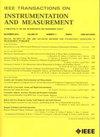Integrated TEM and GPR Data Interpretation for High-Resolution Measurement of Urban Underground Space
IF 5.6
2区 工程技术
Q1 ENGINEERING, ELECTRICAL & ELECTRONIC
IEEE Transactions on Instrumentation and Measurement
Pub Date : 2022-01-01
DOI:10.1109/TIM.2021.3134995
引用次数: 5
Abstract
Ground penetrating radar (GPR) and transient electromagnetic (TEM) technologies can detect urban underground space efficiently and with good sensitivity. These two technologies have complementary advantages, but they are often used independently in urban underground space detection and are rarely used for the integrated interpretation of urban geology. To realize the high-resolution measurement of urban underground space, we take the shallow structure information of GPR as the input information of TEM inversion and use the transdimensional Bayesian (Trans-Bayes) inversion method to realize an integrated interpretation of TEM and GPR data. The simulation results show that, compared with inversion using only TEM data, an integrated inversion improves the accuracy of the inversion results, retains the lateral smoothness of the 2-D model, and reduces the multiple solutions of the TEM inversion. In addition, the richer the layer interface information provided by GPR, the more significant the improvement in inversion quality. We successfully applied GPR and TEM technologies to the accurate detection of an urban underground air-raid shelter area and verified the superiority of GPR in improving the resolution of TEM shallow geological imaging. The combination of GPR and TEM provides a new idea for the high-resolution measurement of urban underground space geology and has practical application value in the accurate early warning of underground water gushing and road collapse accidents.用于城市地下空间高分辨率测量的TEM和GPR数据综合解释
探地雷达(GPR)和瞬变电磁(TEM)技术可以高效、灵敏地探测城市地下空间。这两种技术优势互补,但在城市地下空间探测中往往独立使用,很少用于城市地质的综合解释。为了实现城市地下空间的高分辨率测量,我们将探地雷达的浅层结构信息作为TEM反演的输入信息,并使用跨维贝叶斯(Trans-Bayes)反演方法来实现TEM和探地雷达数据的集成解释。仿真结果表明,与仅使用TEM数据进行反演相比,集成反演提高了反演结果的准确性,保持了二维模型的横向光滑性,减少了TEM反演的多解。此外,GPR提供的层界面信息越丰富,反演质量的提高就越显著。我们成功地将GPR和TEM技术应用于城市地下防空洞区域的精确探测,验证了GPR在提高TEM浅层地质成像分辨率方面的优越性。探地雷达与透射电镜的结合为城市地下空间地质的高分辨率测量提供了新思路,在地下涌水和道路坍塌事故的准确预警中具有实际应用价值。
本文章由计算机程序翻译,如有差异,请以英文原文为准。
求助全文
约1分钟内获得全文
求助全文
来源期刊

IEEE Transactions on Instrumentation and Measurement
工程技术-工程:电子与电气
CiteScore
9.00
自引率
23.20%
发文量
1294
审稿时长
3.9 months
期刊介绍:
Papers are sought that address innovative solutions to the development and use of electrical and electronic instruments and equipment to measure, monitor and/or record physical phenomena for the purpose of advancing measurement science, methods, functionality and applications. The scope of these papers may encompass: (1) theory, methodology, and practice of measurement; (2) design, development and evaluation of instrumentation and measurement systems and components used in generating, acquiring, conditioning and processing signals; (3) analysis, representation, display, and preservation of the information obtained from a set of measurements; and (4) scientific and technical support to establishment and maintenance of technical standards in the field of Instrumentation and Measurement.
 求助内容:
求助内容: 应助结果提醒方式:
应助结果提醒方式:


